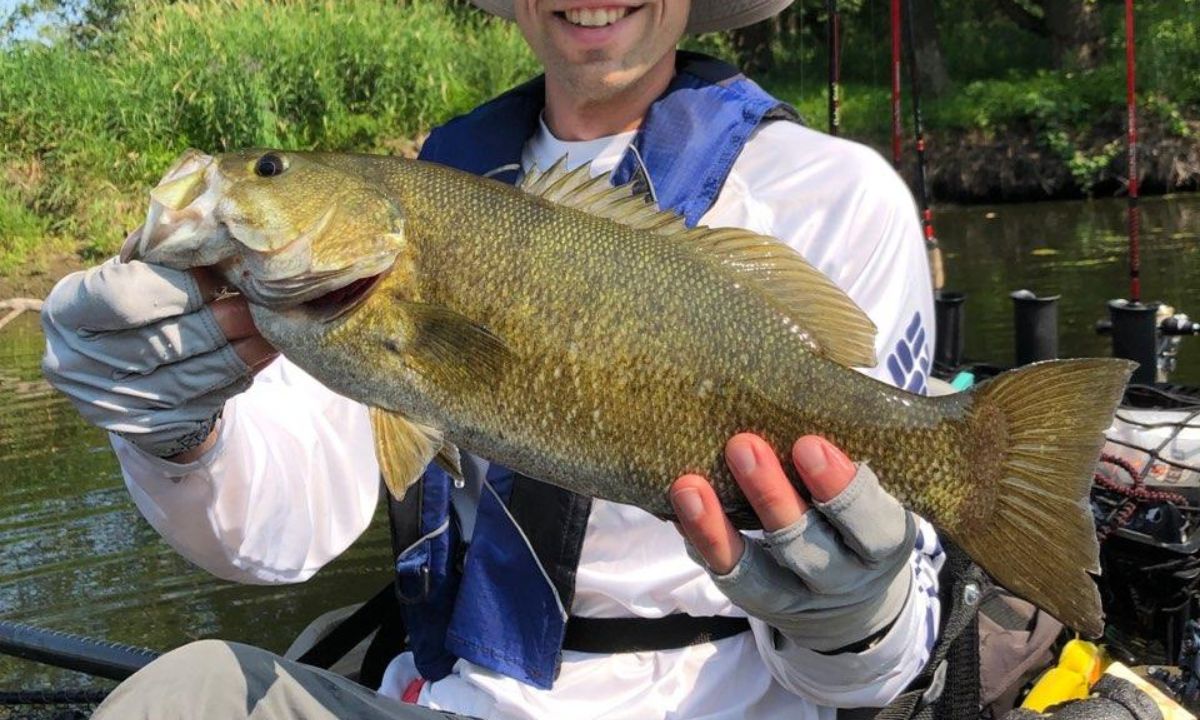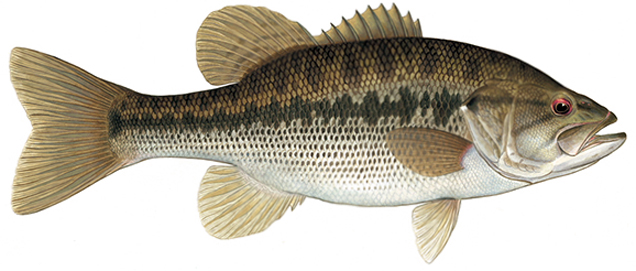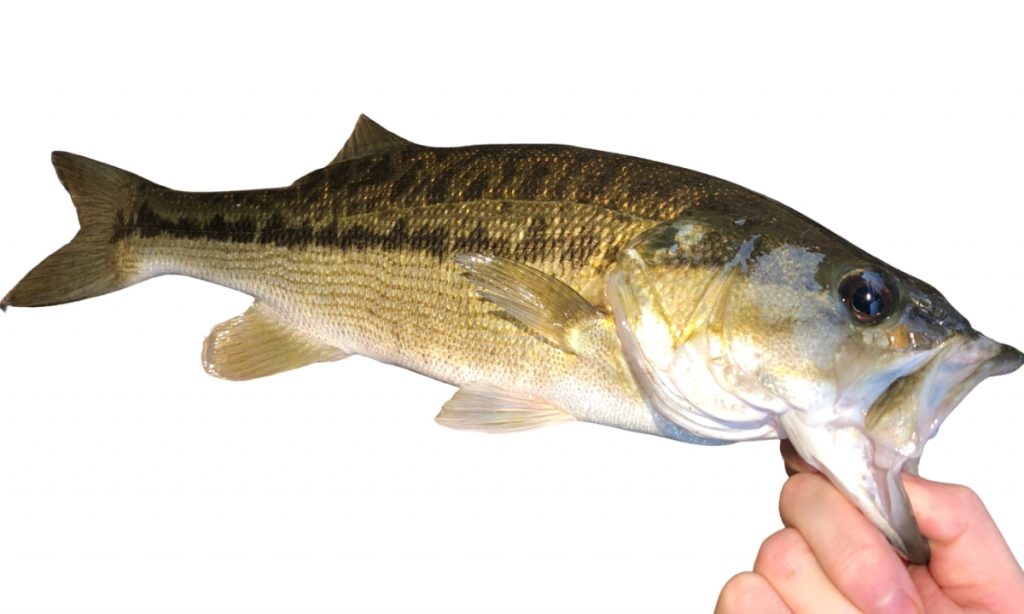Tennessee Fishing
Tennessee has a wide variety of fishing with its more than 176,000 acres of lakes and 27,000 miles of rivers and streams open to the public. The Tennessee River, which meanders through the state, is renowned for its excellent catfishing, particularly for trophy-sized blue catfish. Additionally, the Cumberland River and its tributaries are popular spots for catching bass, crappie, and sauger. The variety of fish species and the scenic beauty of these water bodies make Tennessee a premier destination for anglers seeking both challenge and relaxation.
One of the highlights of fishing in Tennessee is the abundance of reservoirs, such as Dale Hollow Lake, known for its world-record smallmouth bass. Norris Lake, another popular destination, offers excellent striper fishing, bringing in anglers from all over. Tennessee also has great trout fly fishing in the clear mountain streams of the Smokies.
You don’t have to travel far to find fishing in Tennessee. The state’s numerous smaller lakes and ponds have great populations of bluegill, sunfish, and catfish, making it easy for locals to find quality fishing close to home.
Fishing License
Laws & Regulations
Educate yourself on Tennessee’s fishing laws and regulations to ensure you stay legal and avoid costly fines.
Where to Fish in Tennessee
Best Fishing Lakes in Tennessee
- Chickamauga – The most well known lake in the state is Chickamauga which is known as one of the top bass fishing destinations in the country. It holds the state record fish including: Largemouth and Spotted Bass, Yellow Bullhead, and Spotted Sucker.
- Dale Hallow – Dale Hallow is a world class fishing destination. It currently holds the state and world record for Smallmouth Bass.
- Kentucky Lake – Kentucky Lake is known for one of the best ledge fishing lakes in the country. It hosts many bass fishing tournaments each year.
Best River Fishing in Tennessee
- Hiwassee River – A great fly fishing destination offering year-round trout fishing.
- Cumberland River – The Cumberland River has a thriving population of crappie, largemouth and white bass, catfish, sauger and bluegill.
Fish Species in Tennessee
Tennessee has over 50 species of fish, most of which are not seen by anglers. Below you will find the common game fish that anglers typically see when fishing in Tennessee.

Bass | Catfish| Crappie | Panfish | Perch | Pike | Trout | Gar | Carp | Other Species
Bass
Tennessee has 9 types of bass including: Largemouth, Smallmouth, Spotted, Striped, Hybrid Striped, White, Redeye, Yellow, and Alabama Bass.

Largemouth Bass
Largemouth bass are the most targeted species for freshwater anglers. They can be found in every state other than Alaska. They are the largest species of bass.
Learn more about largemouth bass

Smallmouth Bass
Smallmouth bass are the most aggressive bass which makes fishing for them a ton fun. They have a ton of fight which makes up for their smaller sizes. Even though they are smaller than largemouth they still can get pretty big.
Learn more about smallmouth bass

Spotted Bass
Spots are similar to largemouths except they have horizontal rows of small black spots on the lower side. The notch between their spiny and soft dorsal fins is shallower than largemouths.
Spotted bass also have smaller mouths and a circular patch of teeth on the tongue.
Learn more about spotted bass

Striped Bass
Striped bass started out as saltwater fish but were added to freshwater where they survived and adapted. They are a schooling fish, so if you catch one it is very likely there are more around.

Hybrid Striped Bass
- Hybrid mix of striped and white bass
- Broken horizontal strips on body
- Two separate tooth patches on back of tongue
Learn more about hybrid striped bass

White Bass
- Silver-white to pale green color
- Dark back, with white sides and belly
- narrow dark stripes through the length of their sides
- White bass look like shorter versions of striped bass.
Learn more about white bass
Redeye Bass
Redeye bass look very similar to largemouths but they have red coloration in their eyes and tails. They are found in the southeast US. Redeye bass are native to the Coosa River system in AL and GA.

Yellow Bass
- Smallest species of bass
- Brass to yellowish coloring
- Broken stripes on their sides that are offset on the lower side of their anal fin
- Two dorsal fins that are connected by a membrane whereas both white and striped bass are separate.
Learn more about yellow bass

Alabama Bass
- Dark blotchy lines along back
- Row of dark spots along sides
- Tooth patch on tongue
- Jaw extends to eye when closed
Catfish
Tennessee has 6 types of catfish including: Blue, Channel, Flathead, Yellow, Brown Bullhead, and Black Bullhead Catfish.

Blue Catfish
Blue catfish have a flat dorsal fin and forked tail. They have smooth scaleless skin with a light blue body and white belly. They have four pairs of whisker-like barbels.
Blue catfish can grow up to 5ft long and more than 100 lbs. The average size you see is 1-2ft long.
Learn more about blue catfish

Channel Catfish
Channel catfish have a slender scaleless body with a forked tail. They have an olive green to light grey color body with small black spots along their body.
Channel catfish can grow up to 52 inches long and 60lbs. The average size you will see is 1-3ft long and 1-15lbs.
Learn more about channel catfish

Flathead Catfish
Flathead catfish have a flathead and a smooth scaleless body. They have a pale yellow to light brown colored body with a cream belly.
Flathead catfish can grow up to 3-ft long and weight 123lb. The average size you will see is 10-15lbs.
Learn more about flathead catfish

Yellow Bullhead
- Yellowish brown on back and sides
- Yellow to white belly
- Rear edge of the tail fin is nearly straight
- Anal fin rays usually number 24–27

Brown Bullhead Catfish
- Olive to yellowish brown body
- Dark brown spots throughout body
- Four pairs of dark barbels
- Squared tail
- Sharp spines on dorsal and pectoral fins

Black Bullhead
- Dark greenish or yellowish brown
- belly is yellowish or white
- Black chin barbels
- Upper jaw projects beyond the lower jaw
- Anal fin usually has 17–21 rays
Crappie
Tennessee has both black and white crappie.

Black Crappie
Black crappie have white bodies with a dark green and black back. Throughout their bodies they have black and brown spots.
Learn more about crappie

White Crappie
White crappie have a white to silver body with a dark green back. They have blotches that make vertical bars across their sides.
World Record: 5 lb 3 oz – 21 inches long
Panfish
Tennessee has 6 types of panfish including: Bluegill, Green sunfish, Redear Sunfish, Longear Sunfish, Warmouth, Rock Bass, and Pumpkinseed.

Bluegill
- Large, deep bodied sunfish with a small mouth
- Sides are dark bluish-green in color with vertical bars throughout their body
- They have a large dark spot at the rear of the soft dorsal fin
- Their belly is deep orange to rust color
- Adults can grow to 16 in. but usually reach 6-11 in.
Learn more about bluegill

Green Sunfish
- Large, robust sunfish with a large mouth
- Blue irregular stripes of color on the sides of their head
- Large black spot at the rear of their soft dorsal fin
- Adults can grow to 12 in. but usually reach 8-10 in.
Learn more about green sunfish

Redear Sunfish
- Large, deep bodied sunfish with a small mouth with long, pointed snout and small mouth
- Adult males have a red margin on the gill cover flap while females have a light orange flap
- Adults can grow to 15 in. but usually reach 8-11 in.
Learn more about redear sunfish

Warmouth
- Medium-sized, robust sunfish with a large head and mouth
- Dark olive to grey colors with brownish sides and yellow markings
- Dark red-brown lines flowing from the back of their eye
- Adults can grow to 12 in. but most are less than 10 in.
Learn more about warmouth

Rock Bass
- Dark green or brown color with brassy yellow flecks
- 4-5 wide dark saddles over the back and down the sides
- Often called “redeye” or “goggleye” due to its large, deep red eyes
- Has 5 or 6 spines in their anal fin
- Adults can grow to 17 inches but fish exceeding 12 inches are rare
Learn more about rock bass

Pumpkinseed
- Molted blue, orange, yellow, and olive green coloring
- Wavy blue lines on cheeks
- Orange belly
- Black earflaps with red or orange boarder
- 10 spines on the front of dorsal fin with a rounded back
Learn more about pumpkinseed
Perch
Tennessee has 4 types of perch including: Walleye, Yellow, Sauger and Saugeye.

Walleye (Sander canadensis)
- Olive back that gradients down to gold side
- 5 dark bars along sides
- White tip on tail
Learn more about walleye

Yellow Perch
- Yellow to gold coloring
- White belly
- Green to yellow eyes
- 6-8 dark bands along their sides
- Dorsal fin with 12-14 spines and a second dorsal fin with 12-13 soft rays plus 2-3 spines

Sauger (Sander canadensis)
- Bronze to olive color
- Dark blotches on side with white belly
- No white on tail
Learn more about sauger

Saugeye
- Hybrid between walleye and sauger
- Mix between gray to silver color of a walleye and the bronze or brown color of a sauger
- Dark vertical bars between the spines of the first dorsal fin
- White tips on the lower part of the tail and anal fins
Pike
Tennessee has 2 types of Pike including: Muskellunge and Chain Pickerel.

Muskellunge
- Greenish to golden brown coloring on their backs and upper sides
- Long thin body with a flat head and mouth filled with sharp teeth
- 6 to 9 pores on the lower jaw
Learn more about muskie

Chain Pickerel
- Dark green to yellowish green coloring
- Dark chain-like markings over body
- Large dorsal and anal fins positioned close to the tail
- Common to have dark bar under eye that extends straight down
- Hard bony scaled flap covering gills
Trout
Tennessee has 4 types of trout including: Brook, Brown, Rainbow, and Lake Trout.

Brook Trout (Salmo trutta)
- Worm like markings along back & head
- White edges along fins
- Found in eastern North America, Europe, Argentina, New Zealand, and Australia
Learn more about brook trout

Brown Trout (Salmo trutta)
- Silver & golden brown
- Orange to red spots with silver rings around them
- Found throughout the United States, Europe, Africa, and Western Asia
Learn more about brown trout

Rainbow Trout (Oncorhynchus mykiss)
- Distinct red pink stripe down their side
- Black spots throughout body
- Square, broad tail
Learn more about rainbow trout

Lake Trout
- Dark green to brown or greyish color
- Darker on top half of body
- White to yellow spots throughout body
Gar
Tennessee has 4 types of gar including: Shortnose, Longnose, Spotted, and Aligator Gar.

Shortnose Gar
- Brown to olive green coloring
- White belly
- Black spots on the top of the head and on paired fins
- Upper jaw has one row of cone-shaped teeth
- Beak is only about 5 1/2 times as long as its narrowest width

Longnose Gar
- Brown to dark olive coloring
- Dark spots on back, sides, and fins
- Elongated jaws that form a needle-like snout nearly three times the length of its head
- Upper jaw has a row of cone-shaped teeth
- Diamond-shaped interlocking scales

Spotted Gar
- Brown back that gradients to a silver to white belly
- Has dark spots on its head, fins, and body
- Upper jaw has one row of cone-shaped teeth
- Maximum length of 3ft

Alligator Gar
- Olive brown color
- Diamond-shaped interlocking scales
- Rounded tail fin
- Dorsal and anal fins are far back on body
- Upper jaw has a dual row of large, sharp teeth
- Largest gar species
Carp
Tennessee has 4 types of carp including: Common, Grass, Silver, and Bighead Carp.

Common Carp
- Babels in each corner of their mouth
- Olive-brown to reddish-brown with a yellow belly
- Large and thick scales
Learn more about common carp

Grass Carp
- Olive-brown back with silver sides and a white belly
- Large, crosshatched scales with dark edging
- Do not have barbels
- Short, pointy dorsal fin with 7-8 rays
- Their anal fin have 9 or fewer rays
- Both their dorsal fin and anal fin are barbless on the leading edge
Learn more about grass carp

Silver Carp
- Silver body with a gray head and dorsal surface with a white belly
- Eyes on the lower side of their body
- Lack barbels and are toothless
Learn more about silver carp

Bighead Carp
- Dark gray on their top half with a cream color lower half
- Irregular black spots on back and sides
- Thick-bodied with a wide scaleless head
- Their eyes are forward and low on their body.
- Upturned mouth with no teeth or barbels
Learn more about bighead carp
Other Species
Tennessee has 3 other types of game fish including: Freshwater Drum, Bowfin, and Paddlefish.

Freshwater Drum
- Humped back with sloping forehead
- Gray body with bronze reflection and white lips
- Rounded triangular tail

Bowfin
- Green and brown coloring on side and back
- Silver to white colored belly
- Black spot surrendered by orange ring on tail
- Paired fins and anal fin are bright green
- Jaw has strong conical teeth

Paddlefish
- Gray or green in color
- Wide mouths with large, paddle-like snouts
- Smooth skin lacking scales
- Small eyes
- Elongated opercle flap over their gills
Tennessee Fishing Records
Find Tennessee’s fishing records for over 70 species and how to qualify & submit your catch for the record fish program.
Frequently Asked Questions
What is the most common fish in Tennessee?
The most common fish in Tennessee are bass, catfish, crappie, and various panfish.
Are there wild trout in Tennessee?
Brook, Brown, and Rainbow trout are all native trout in Tennessee. Lake trout have also been introduced to various bodies of water throughout Tennessee.
Is there snakehead in Tennessee?
Snakeheads have been found in Tennessee in the past but haven’t been seen the last few years. In Tennessee anglers are required to report and kill any snakeheads caught.
What is the biggest fish caught in Tennessee?
The largest fish ever caught in Tennessee was a Blue Catfish weighing 112 lbs on Cumberland River in 1998.
